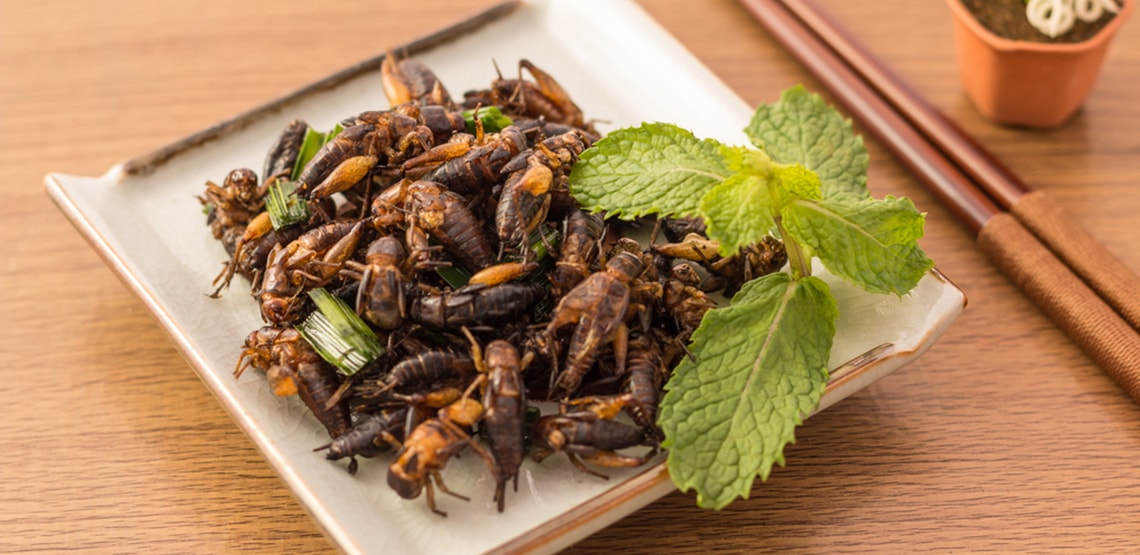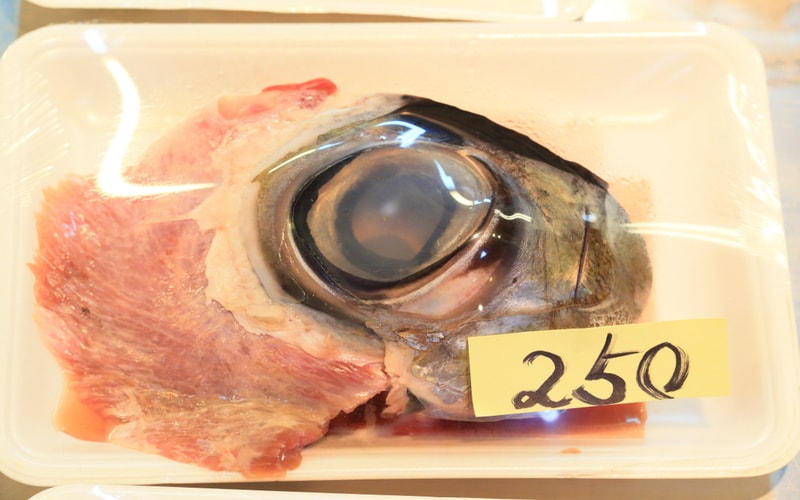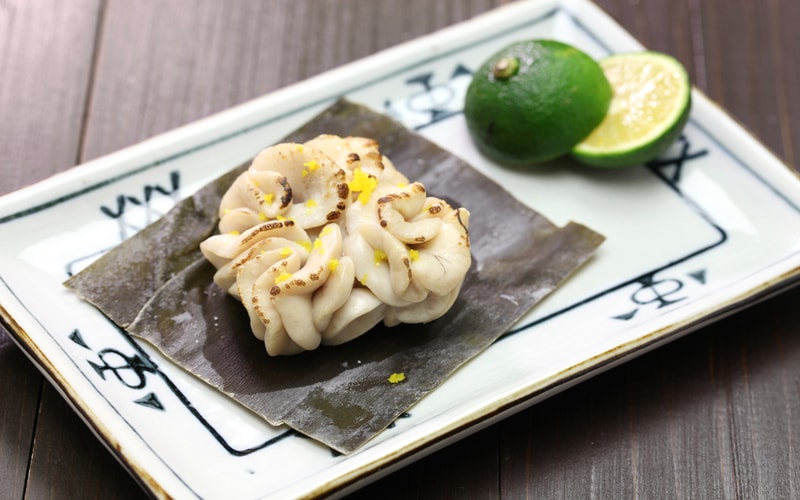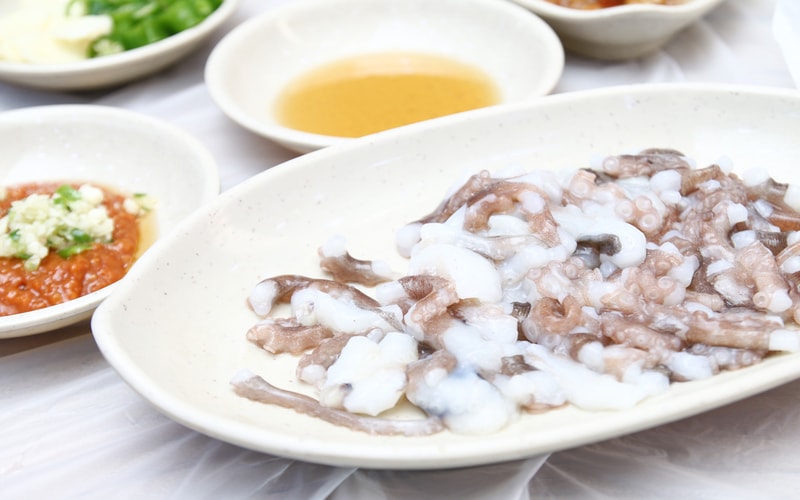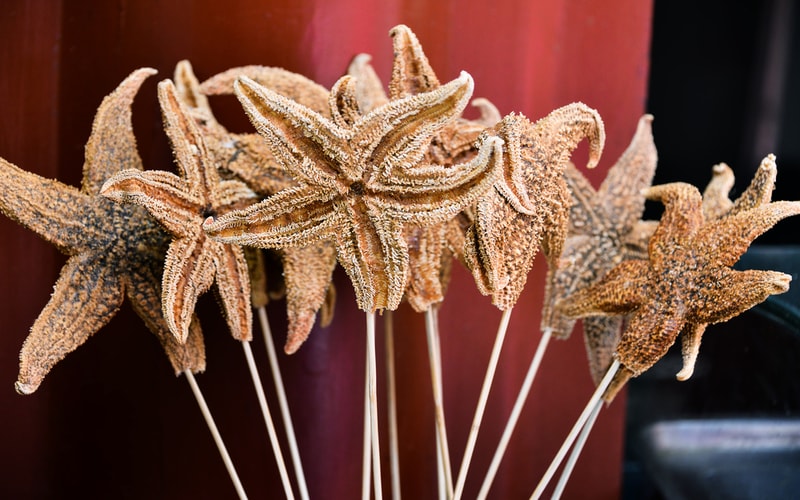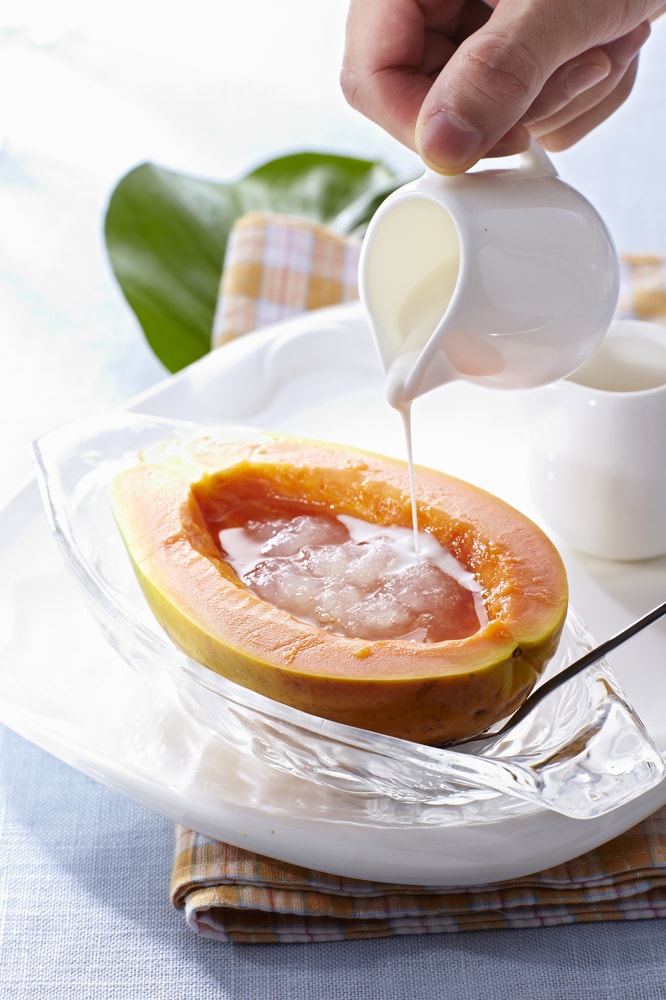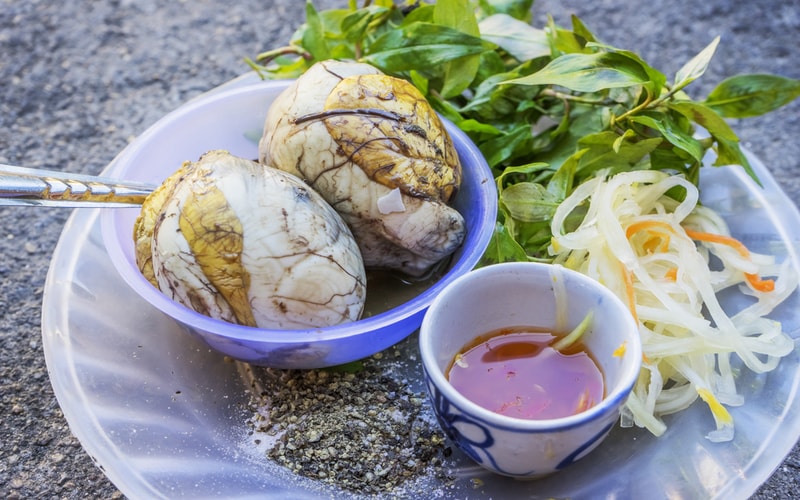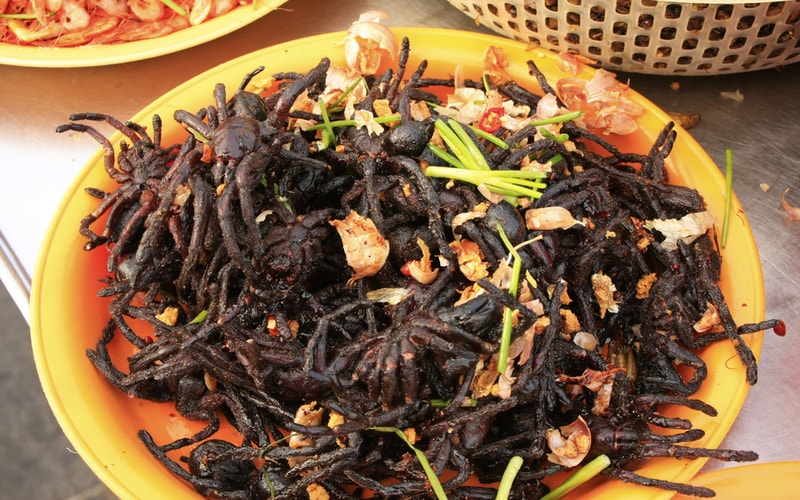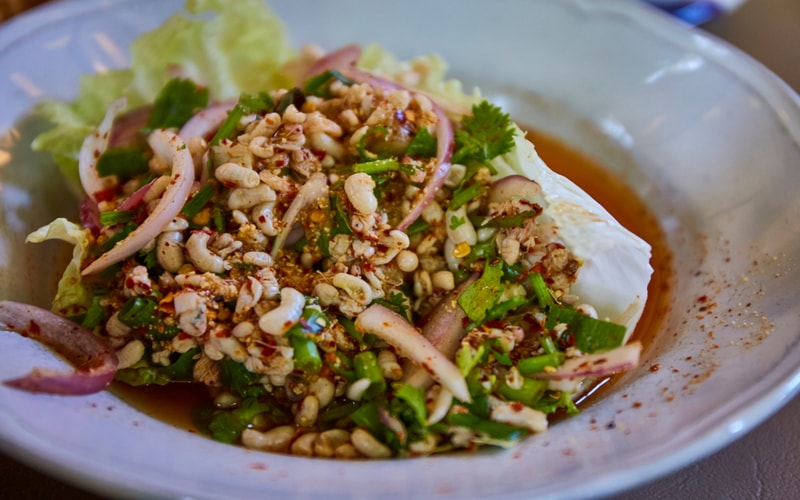Fancy yourself as an adventurous person game to try any exotic local delicacies on your travels? From tuna eyeballs to deep fried tarantulas, here are some of Asia’s strangest local delicacies – hold on to your stomachs, and read on.
1. Tuna eyeballs – Japan
If you are not squeamish about your food staring at you, have a go at tuna eyeballs in Japan. Surrounded by bits of fats and muscles, the tuna eyeball is high in omega-3 fatty acids, which is good for the brain.
Tuna eyeballs can be eaten steamed, stewed, or fried. Begin eating it from the outer muscles and fats, before going into the rubbery eyeball shell, where there is a soft chewy part that tastes like hard boiled eggs with a firmer consistency, similar to boiled squid.
2. Cod sperm sac – Japan
If you like the pudding-like consistency of Japanese steamed egg chawanmushi, you might want to try cod fish sperm sac, or shirako. Raw shirako looks a little like brains – a milky-soft slippery mass with light pink veins.
It can also be eaten steamed or lightly pan-fried, which crisps up the surface while the inside remains rich, creamy and light-tasting, with just a hint of saltiness.
3. Live octopus tentacles – South Korea
This is literally a stomach-churning dish – eating a plate of “live” octopus legs wriggling in oil and sesame seeds. Even though the octopus is no longer alive, it is so fresh that the nerves and suctions are still active, attaching itself to your chopsticks and sticking to the sides of your tongue.
Be sure to chew thoroughly before swallowing, or you might choke on the stubborn tentacles that can get stuck in the throat!
4. Deep fried starfish – China
Wangfujing Street Market is one of those places in Beijing where you can find delectable street food. However, amongst the usual traditional fried dumplings and meat skewers, lies the deep fried starfish – something you’d least expect to find in this popular tourist spot! Beneath the hard and crispy exterior is the best part of the starfish – a brown, mushy “goo” which can only be tasted when you break apart a leg. The strong pungent fishy innards is an acquired taste for sure.
5. Hashima – Hong Kong
Isn’t it amazing how creative people can be when it comes to food? Hashima is one of the strangest ingredients found in sweet Chinese desserts. It has a light, chewy taste, hence often mistaken for tapioca jelly. However, hashima actually refers to the fats next to the fallopian tubes of an Asiatic Grass Frog. It is said to be really nourishing and reduces “heatiness” (this is a term that’s used to refer to symptoms like sore throat and mouth ulcers) from the body. Aside from the chewy texture, hashima has a bland taste. So if it helps, you can think of it as a kind of jelly!
6. Balut – The Philippines
If you are in the Philippines and come across street vendors selling hard-boiled eggs, chances are, the eggs are balut, a hard-boiled duck egg with a close-to fully developed embryo inside.
With distinctly formed eyes, beak and even feathers, the balut is regarded as an aphrodisiac. Eaten with a pinch of salt and vinegar, it has been described to taste rich, creamy, and meaty, with a hint of fishiness.
7. Deep fried tarantulas – Cambodia
Deep fried tarantulas are a local delicacy in Cambodia, and is often paired as a snack with cold beer. It can be pretty expensive for the locals, so people only eat them on special occasions, such as birthdays. The legs are crunchy and crispy. And the body? Let’s just say it can get pretty messy when you bite into it.
8. Raw ant eggs salad – Thailand
A seasonal dish only available in summer, raw red ants and their eggs are tossed together with herbs, onions, and spices into a unique fresh-tasting, spicy salad. The ants’ bodies are said to “pop” in your mouth and leave a fresh citrusy taste as you bite into them, while the eggs are soft, gooey, fatty, and sweet. Just close your eyes and don’t look into your plate.
9. Spicy roasted bat – Indonesia
Roasted bats are known in Indonesia for their incredible range of medicinal qualities – from relieving asthma to whitening the skin. The meat of the bat has a strong gamey smell, so a lot of time goes into cooking it to make it delicious. It is first cooked in coconut milk, before spices, herbs, and other condiments are added.
10. Pig’s brain soup – Singapore
This is a common supplement prescribed by overzealous Chinese parents during the school exams season, as it is believed to be good for the brains and help their kids get smarter. The people who like eating it enjoy it for its texture, which is soft and creamy like tofu. It is usually cooked in herbal broth which may also include bits of chicken skin and chicken feet.
The food we eat reveals a lot about our history, traditions, and beliefs. One of the best ways to connect with locals when you are travelling is to try everything that is offered on your plate! Even if it looks weird at first, who knows, you might actually come to like it!
Shop before you fly!
Shop 30 days in advance and up to 12 hours before your flight at the comfort of your own home. Plus, enjoy tax and duty-free prices and online-exclusive offers. Shop now at iShopChangi!
Be rewarded when you shop at Changi!
Leap into a world of exclusive privileges as a Changi Rewards member. Enjoy GST-absorption for your purchases at participating outlets in the public areas of the airport and more. Sign up for the FREE membership here.
WiFi routers, travel insurance, attraction tickets and more!
Specially curated to meet your travelling needs, Changi Recommends offers an extensive range of travel necessities such as WiFi routers, travel insurance and more to help you get ready for your holiday. Shop now at Changi Recommends!



